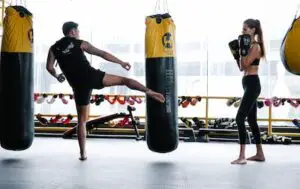Capoeira, a unique Brazilian martial art, combines elements of dance, acrobatics, and music. This captivating art form requires a strong and stable core to execute its dynamic movements with precision and power. Whether you’re a beginner or an experienced practitioner, enhancing your core strength is essential for advancing in Capoeira. In this comprehensive guide, we will explore six effective exercises that target different core muscles, improving your balance, agility, and overall performance in Capoeira.
Why is Core Strength Important in Capoeira?
A strong core serves as the foundation for all Capoeira movements. It provides stability and control while executing kicks, spins, and acrobatic maneuvers. Core strength enhances your balance, allowing you to maintain stability on one leg and perform intricate transitions effortlessly. Moreover, a strong core enables you to generate power and deliver explosive movements in Capoeira.
Plank Variations
Plank exercises are a fundamental component of core training. They engage multiple core muscles simultaneously, including the rectus abdominis, transverse abdominis, and obliques. Start with a basic plank by assuming a push-up position with your forearms resting on the ground. Hold this position while maintaining a straight line from your head to your heels. To target specific core muscles, incorporate variations such as side planks, forearm planks, and plank with leg lifts. These exercises challenge your core stability and build strength in different planes of movement.
Russian Twists
Russian twists are excellent for developing rotational strength in the core, mimicking the twisting movements commonly found in Capoeira. Sit on the ground with your knees bent and lean back slightly, maintaining a straight spine. Lift your feet off the ground and balance on your tailbone. Hold a weight or medicine ball and twist your torso from side to side, touching the ball to the ground on each side. As you progress, increase the difficulty by lifting your feet higher or using a heavier weight.
Leg Raises
Leg raises effectively target the lower abdominal muscles, which play a crucial role in maintaining balance and control in Capoeira. There are various leg raise variations to challenge different aspects of core strength. Hanging leg raises involve hanging from a pull-up bar and lifting your legs to a 90-degree angle. Lying leg raises are performed on the ground, raising your legs while keeping your lower back pressed against the floor. Knee tucks on a stability ball provide an additional challenge by engaging the stabilizing muscles of the core.
Medicine Ball Exercises
Incorporating medicine ball exercises into your core training routine adds an element of resistance and dynamic movement. Medicine ball sit-ups involve holding the ball against your chest while performing sit-ups, engaging both your upper and lower abdominals. Russian twists with a medicine ball increase the rotational challenge. Wood chops simulate the movements of Capoeira kicks, enhancing core strength while improving coordination and power. Remember to choose an appropriate weight and maintain proper form to prevent injury.
Hollow Body Hold
The hollow body position is a fundamental component of Capoeira, requiring a strong core and posterior chain. Lie on your back with your legs extended and arms reaching overhead. Engage your core, press your lower back into the ground, and raise your legs and upper body slightly off the floor, maintaining a hollow shape. This exercise targets the deep core muscles and improves overall body awareness. Progress by extending your arms beside your body or adding leg movements while maintaining the hollow position.
Pilates for Core Strength
Pilates is renowned for its focus on core strength, stability, and breath control. Incorporating Pilates exercises into your training regimen can greatly enhance your Capoeira performance. Exercises such as the Pilates roll-up, hundred, and teaser challenge your core muscles while emphasizing proper alignment and control. Pilates movements also promote flexibility, which is vital for executing the flowing and acrobatic sequences in Capoeira.
Flexibility and Core Strength
Flexibility and core strength go hand in hand in Capoeira. A strong core allows you to maintain control and stability during dynamic stretches and movements. Integrate stretching exercises into your routine to improve flexibility and enhance your core strength further. Incorporate dynamic stretches like leg swings, hip rotations, and torso twists. Yoga poses such as the warrior series and standing splits promote flexibility while engaging the core. Additionally, incorporate mobility drills to improve joint range of motion and overall body control.
Conclusion
Developing a strong core is essential for achieving mastery in Capoeira. By incorporating the six key exercises discussed in this article into your training routine, you will enhance your core strength, improve your balance, and elevate your overall performance in this captivating martial art. Remember to focus on proper technique, gradually increase intensity, and allow for adequate recovery. Consult with a fitness professional or Capoeira instructor to ensure correct form and progression. With consistent practice and dedication, you’ll unlock the full potential of your core, empowering you to execute impressive movements and transitions in the world of Capoeira.





